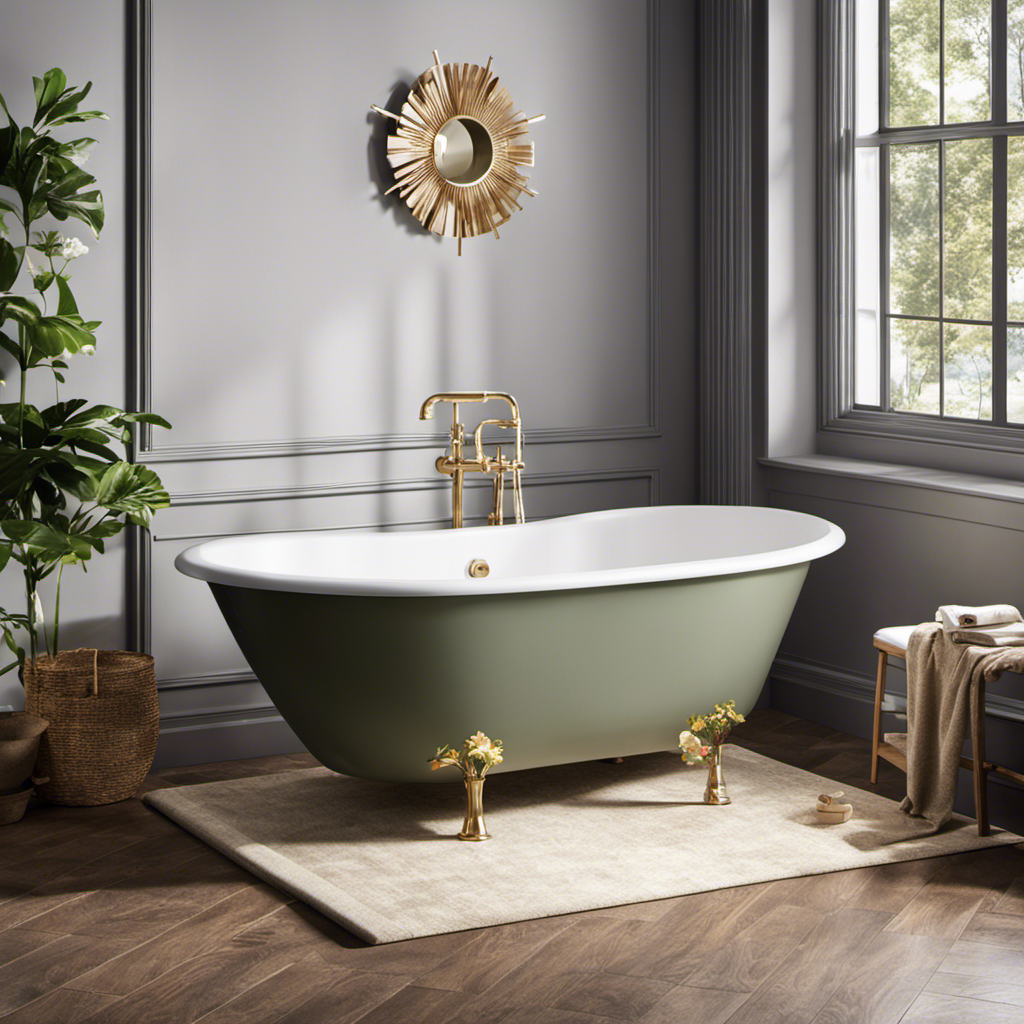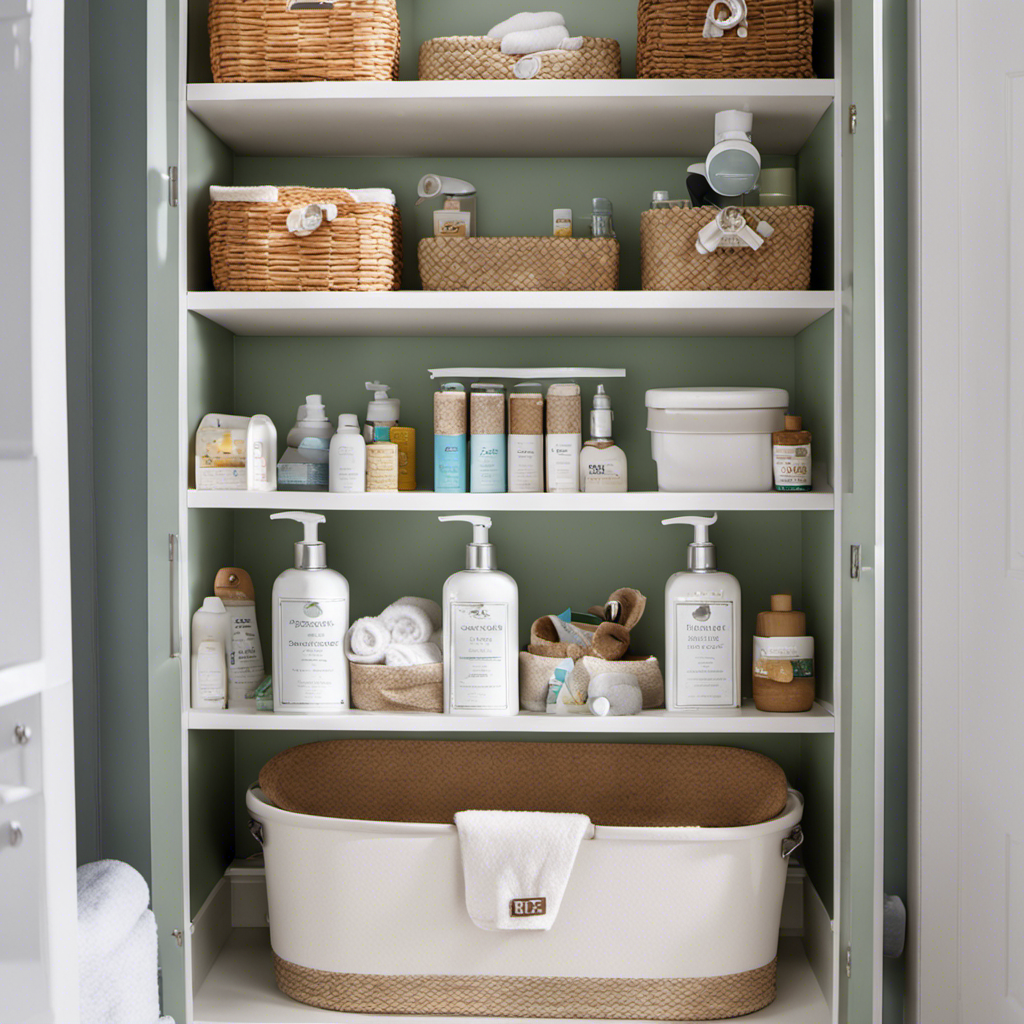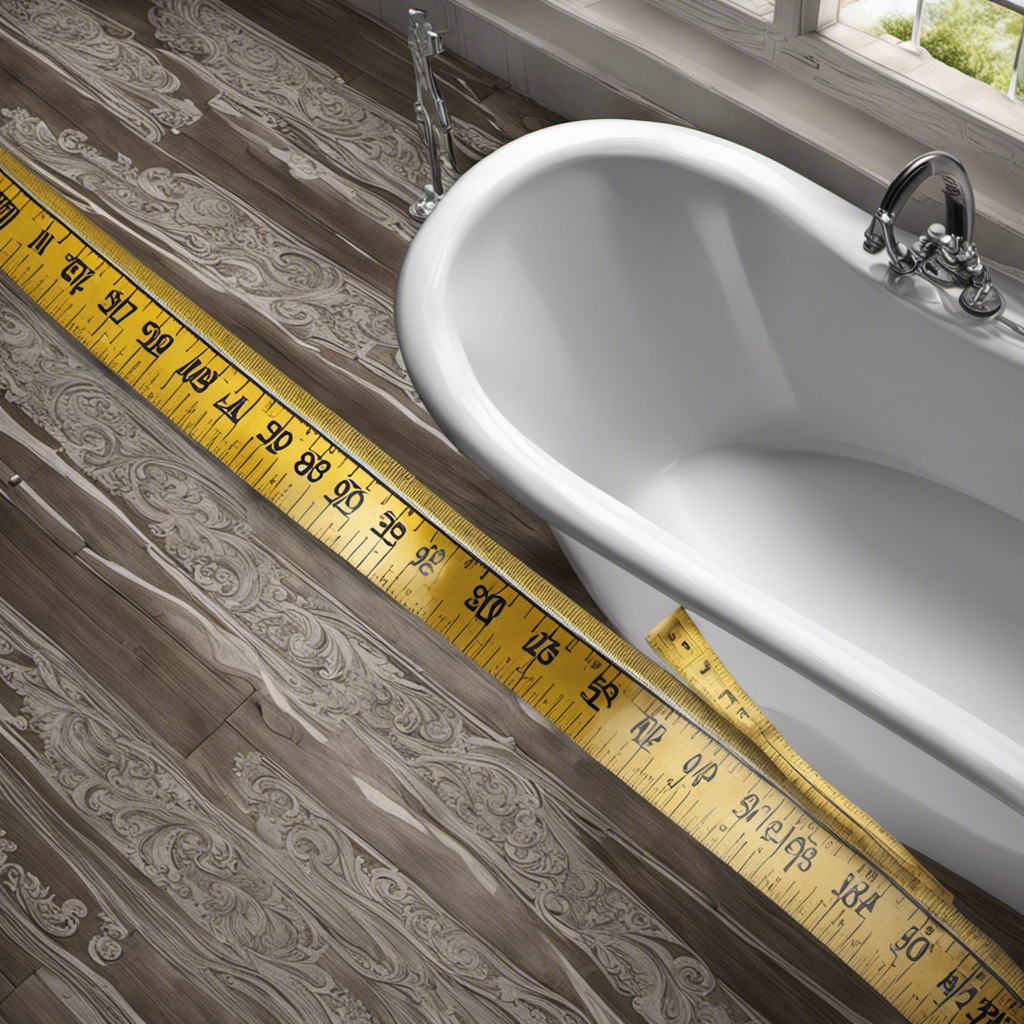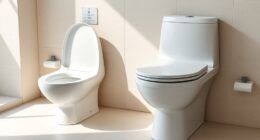I know what you’re thinking: why on earth would a bathtub move when you stand in it? Well, let me tell you, this is a real issue that many people face. It can be frustrating and even dangerous.
But fear not, because in this article, we will explore the potential causes of bathtub movement, assess the structural integrity, and provide tips and professional solutions to stabilize your bathtub once and for all.
So, let’s dive in and fix that wobbly tub!
Key Takeaways
- Bathtub movement can cause damage to pipes, fittings, and surrounding areas, leading to leaks, burst pipes, and costly repairs.
- A moving bathtub poses safety hazards, increasing the risk of falls and injuries.
- Uneven floorboards and improper installation can be potential causes of bathtub movement, which can be fixed by securing loose or damaged floorboards and using shims or rubber pads for stability.
- It is important to assess the structural integrity of the surrounding walls and flooring for cracks, water damage, or rotting to ensure bathtub stability.
Identifying the Issue
The first step in identifying the issue is to determine why the bathtub moves when you’re standing in it.
The movement of the bathtub can have a significant impact on the plumbing system. When the bathtub moves, it can cause stress on the pipes and fittings, leading to potential leaks or even burst pipes. This can result in water damage to the surrounding areas and costly repairs.
Additionally, a moving bathtub poses potential safety hazards. It can cause you to lose your balance and fall, resulting in injuries. Moreover, the movement can also damage the flooring, causing it to become uneven or cracked.
Therefore, it is crucial to investigate and address the root cause of the bathtub movement to prevent any further damage and ensure the safety of the occupants.
Potential Causes of Bathtub Movement
One potential cause of the bathtub moving while you’re in it could be uneven floorboards. This is a common issue that can occur over time due to the natural settling of a house or improper installation of the floorboards.
When the floorboards are not level, they can create an unstable foundation for the bathtub, causing it to shift or move when weight is applied.
To fix this issue, you can try some simple DIY solutions. First, check the floorboards for any loose or damaged sections and secure them properly. You can also use shims to level out any uneven areas.
Additionally, placing rubber pads or adhesive strips under the bathtub’s feet can provide extra stability and prevent movement.
Assessing the Structural Integrity
Assessing if there are any cracks or damages in the surrounding walls or flooring is important to ensure the structural integrity of your bathtub.
When evaluating safety measures, it is crucial to inspect the area for any signs of bathtub deterioration. Start by examining the walls surrounding the bathtub. Look for any visible cracks, especially near the corners or where the walls meet the floor. These cracks can indicate underlying structural issues that may cause the bathtub to move.
Next, inspect the flooring beneath the bathtub. Check for any signs of water damage, such as discoloration or soft spots. These could indicate leakage or rotting, which can weaken the bathtub’s support.
Tips for Stabilizing the Bathtub
To stabilize your bathtub, start by checking for any visible cracks or damages in the surrounding walls or flooring. These issues can contribute to the instability of the bathtub. Once you have assessed the structural integrity, you can proceed with common DIY fixes to enhance bathtub stability. Here are a few techniques you can try:
| Technique | Description | Difficulty |
|---|---|---|
| Caulking | Apply a fresh layer of caulk around the edges of the bathtub to create a watertight seal. | Easy |
| Adding Support Braces | Install support braces underneath the bathtub to reinforce its stability and prevent movement. | Moderate |
| Adjusting Levelling Feet | Check if the bathtub has adjustable leveling feet and make sure they are properly adjusted. | Easy |
| Securing to the Studs | Use screws to secure the bathtub to the wall studs, providing additional stability. | Moderate |
| Reinforcing the Floor | Strengthen the floor beneath the bathtub by adding extra support beams or plywood. | Difficult |
Professional Solutions for Persistent Movement
If your bathtub continues to move despite attempting DIY fixes, it might be necessary to consider professional solutions. Preventing bathtub movement requires expert knowledge and specialized tools to ensure a long-lasting solution.
Hiring a professional plumber is crucial in addressing persistent movement issues. They possess the expertise to accurately diagnose the cause of the movement and implement effective remedies. A professional plumber will thoroughly inspect the bathtub’s installation, checking for any loose connections or inadequate support. They may recommend reinforcing the bathtub’s base or installing additional support brackets to stabilize it.
Additionally, they can identify any underlying plumbing issues that may be contributing to the movement. By relying on a professional plumber, you can have peace of mind knowing that the problem will be resolved efficiently and effectively, preventing any further movement in your bathtub.
Conclusion
In conclusion, after carefully assessing the issue of bathtub movement, it is clear that the structural integrity of the bathtub is compromised.
Despite the potential causes and tips for stabilization, it seems that the bathtub will continue to move.
It is quite ironic that a place intended for relaxation and tranquility can become a source of frustration and instability.
For those experiencing persistent movement, seeking professional solutions may be necessary to ensure a secure and steady bathing experience.










